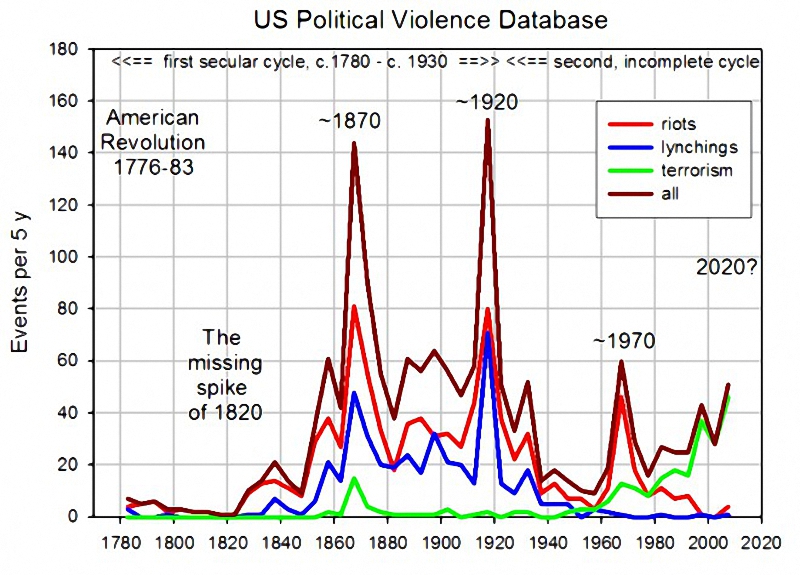
It’s not the mathematics. Turchin says his methods aren’t very complex. He’s using common statistical techniques like spectrum analysis — “I used much more sophisticated statistical methods in ecology,” he says. And it’s not “big data” tools. The data sets he’s using aren’t all that big. He can analyze them using ordinary statistical software. But he couldn’t have built these models even a few decades ago because historians and archivists have only recently started digitizing newspapers and public records from throughout history and putting them online. That gives cliodynamics the opportunity to quantify what has happened in the past — and make predictions based on that data.
[…]
What Turchin and his colleagues have found is a pattern of social instability. It applies to all agrarian states for which records are available, including Ancient Rome, Dynastic China, Medieval England, France, Russia, and, yes, the United States. Basically, the data shows 100 year waves of instability, and superimposed on each wave — which Turchin calls the “Secular Cycle” — there’s typically an additional 50-year cycle of widespread political violence. The 50-year cycles aren’t universal — they don’t appear in China, for instance. But they do appear in the United States.
[…]
Turchin takes pains to emphasize that the cycles are not the result of iron-clad rules of history, but of feedback loops — just like in ecology. “In a predator-prey cycle, such as mice and weasels or hares and lynx, the reason why populations go through periodic booms and busts has nothing to do with any external clocks,” he writes. “As mice become abundant, weasels breed like crazy and multiply. Then they eat down most of the mice and starve to death themselves, at which point the few surviving mice begin breeding like crazy and the cycle repeats.”
Ref: Mathematicians Predict the Future With Data From the Past – Wired